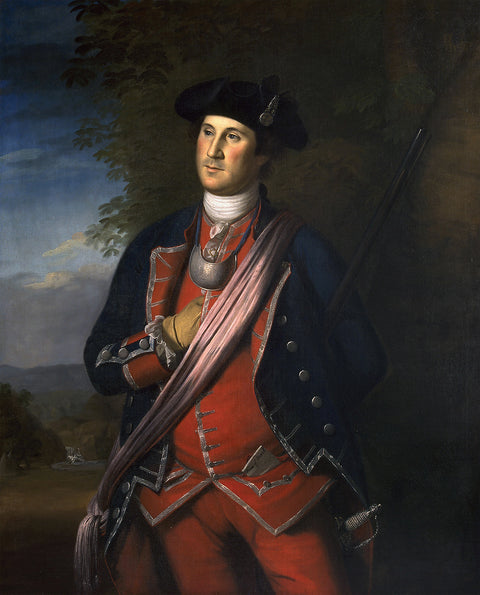
Clothes May Not Make the Man, But These Commanders’ Personal Effects Are Instantly Recognizable
Like it or not, war can sometimes be a fashion statement. Among the multivarious uniforms that distinguish one unit from another, senior officers may indulge in the privilege of distinguishing themselves with individual touches—to be identifiable to their own troops, though hopefully not to the enemy. History records Hannibal Barca going to battle dressed as a common soldier, less conspicuous to his Roman enemies but still recognizable to his men. During the Napoléonic wars the namesake French emperor, Prussian Field Marshal Gebhard Leberecht von Blücher and British Field Marshal Arthur Wellesley, Duke of Wellington, favored the casual route, confident they’d be recognized by the right people when it counted. For every such low profile, however, there were extroverts who, aided by singular flourishes, went the distance to be unmistakable to all.
By World
War II General Douglas MacArthur
had his own formula down with this combo of crushed hat, aviator glasses and
corncob pipe. These signature personal effects are preserved for posterity in
the collection of the MacArthur Memorial in Norfolk, Va.
From 1943 on British Field Marshal Bernard Law
Montgomery made his
presence known with this black Royal Tank Regiment beret trimmed with gold
braid. The beret is on display at the Imperial War Museum in London.
Reminiscent of the way Roman centurions distinguished
themselves with transversely aligned crests on their helmets, Napoléon
Bonaparte wore his
bicorne hat (like this one in the collection of Berlin’s German Historical
Museum) ear to ear across his head.
After being persuaded to quit the field at Mollwitz
on April 10, 1741—and almost losing the battle as a result—Prussian King
Frederick the Great made
a point of always accompanying his men into the fray. At least three of his
uniform coats have been preserved, including this one, also in Berlin’s German
Historical Museum.
Theodore
Roosevelt was already making a name for himself
and his pince-nez spectacles by 1898 when he added the headgear of the 1st
U.S. Volunteer Cavalry “Rough Riders” to his trappings. This slouch hat of the
“Cowboy President” hangs at New York’s Sagamore Hill National Historic Site.
When rendering this 1772 portrait
of then Colonel George Washington—the earliest known
depiction of the future president—Charles Willson Peale captured the hilt of
this sword now preserved at Mount Vernon, Va. Washington is believed to have
worn the sword when he resigned his commission as commander in chief in
Annapolis, Md., in 1783 and when inaugurated on April 30, 1789.
On May 14, 1916, during Brig. Gen. John J. Pershing’s
pursuit of Pancho Villa into Mexico, 2nd Lt. George S.
Patton Jr. used this ivory-handled .45-caliber Colt Single Action Army
revolver in a gun-fight with three Villistas and claimed two of them. Patton’s
“Peacemaker,” with twin notches on the grip, is preserved in the General
George Patton Museum of Leadership at Fort Knox, Ken.
Clotheshorse George
Armstrong Custer made an
impression during the Civil War with his far-from-standard-issue black velvet
uniform and continued to dress as he pleased on the frontier as lieutenant
colonel of the 7th U.S. Cavalry Regiment. In his wardrobe was this buckskin
coat, on display at the Smithsonian’s National Museum of American History in
Washington, D.C.
When
assigned to the trenches near Ploegsteert, Belgium, in 1915–16, Lt. Col.
Winston Churchill of the 6th Royal Scots Fusiliers took to wearing a French Adrian
helmet. When visiting the Western Front as World War II British prime
minister, Churchill relied instead on this Mark II Brodie steel helmet
(whereabouts unknown).
Free French General Charles de
Gaulle’s kepi, preserved
in the Musée de l’Ordre de la Libération in Paris, kept him in the Allied
public eye from 1941 to ’44.
Major General William Tecumseh
Sherman’s campaign
hat, also on display at the National Museum of American History, reflects 1858
Army regulations with its gold general’s cord and silver “U.S.” on black
velvet.
This story appeared in the 2023 Autumn issue of Military History magazine.
historynet magazines
Our 9 best-selling history titles feature in-depth storytelling and iconic imagery to engage and inform on the people, the wars, and the events that shaped America and the world.
